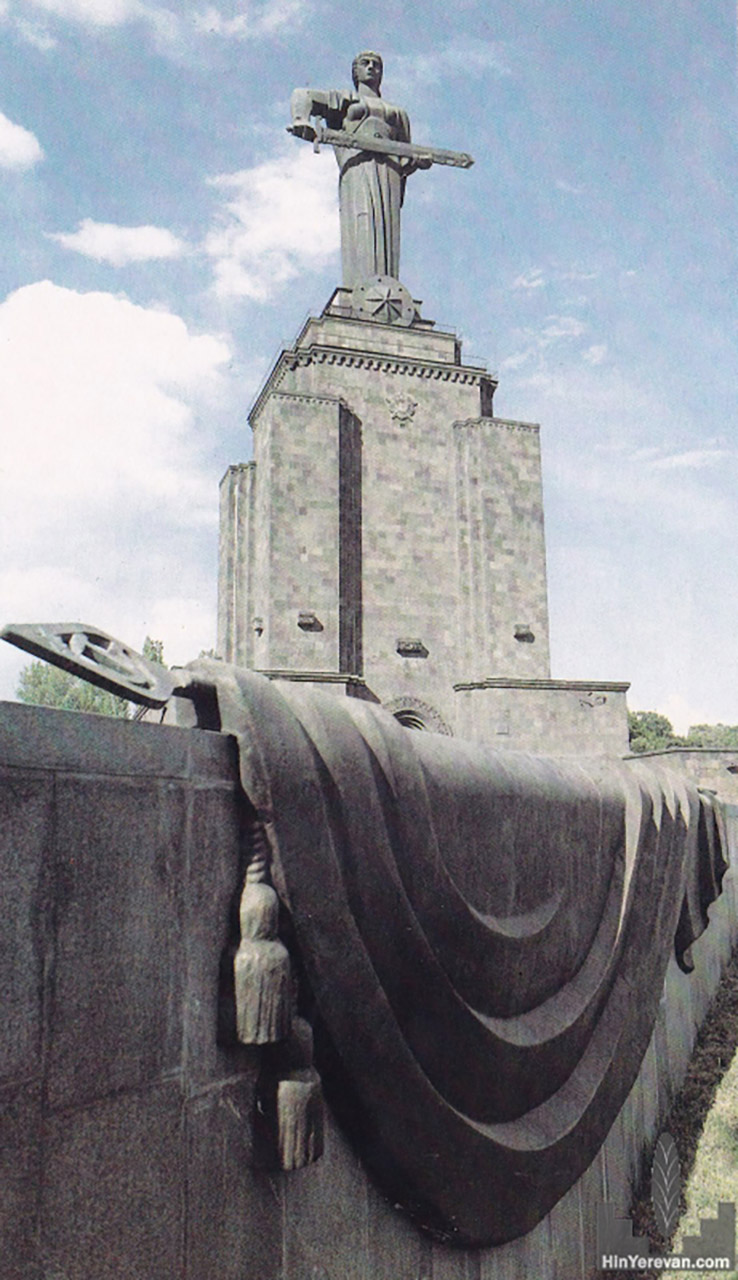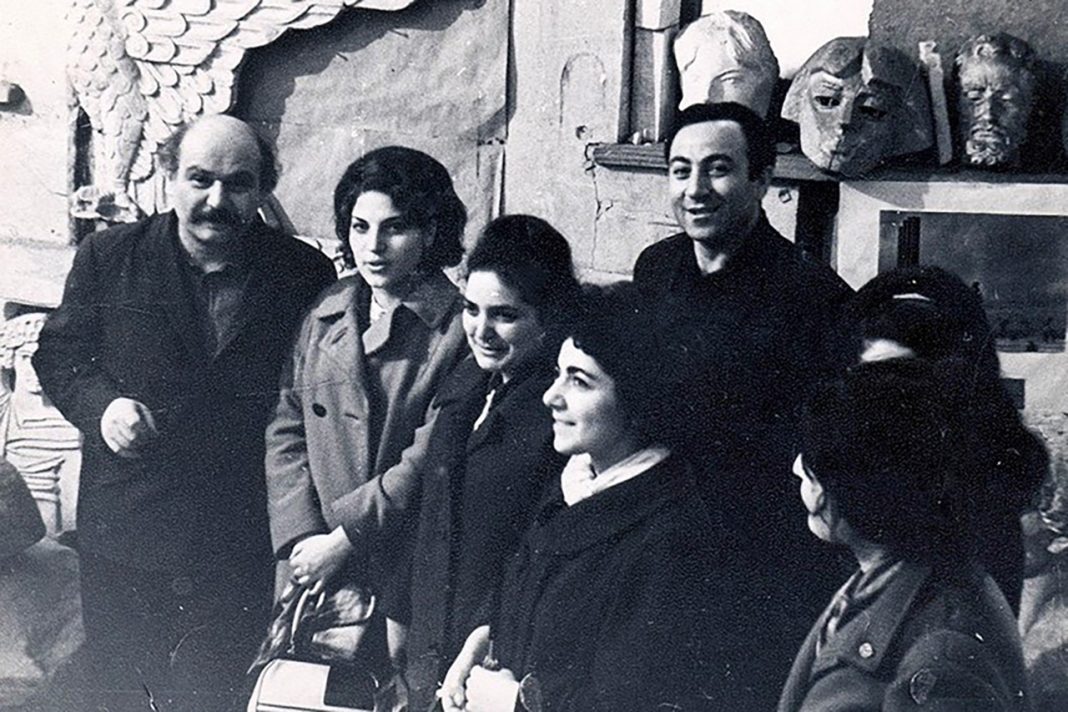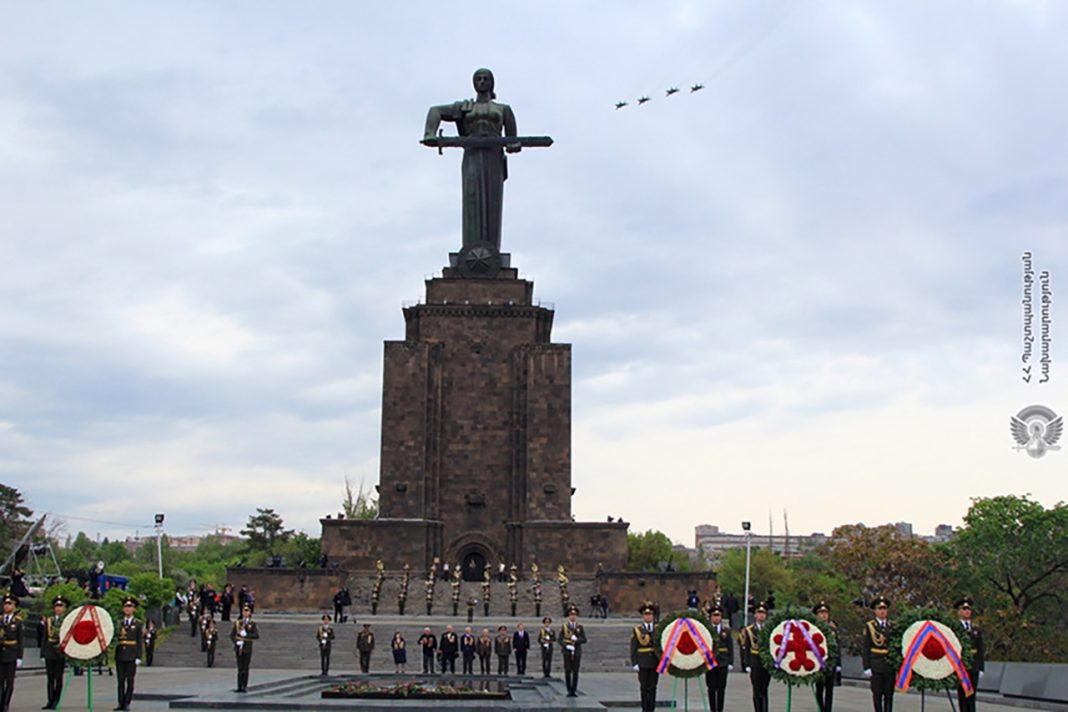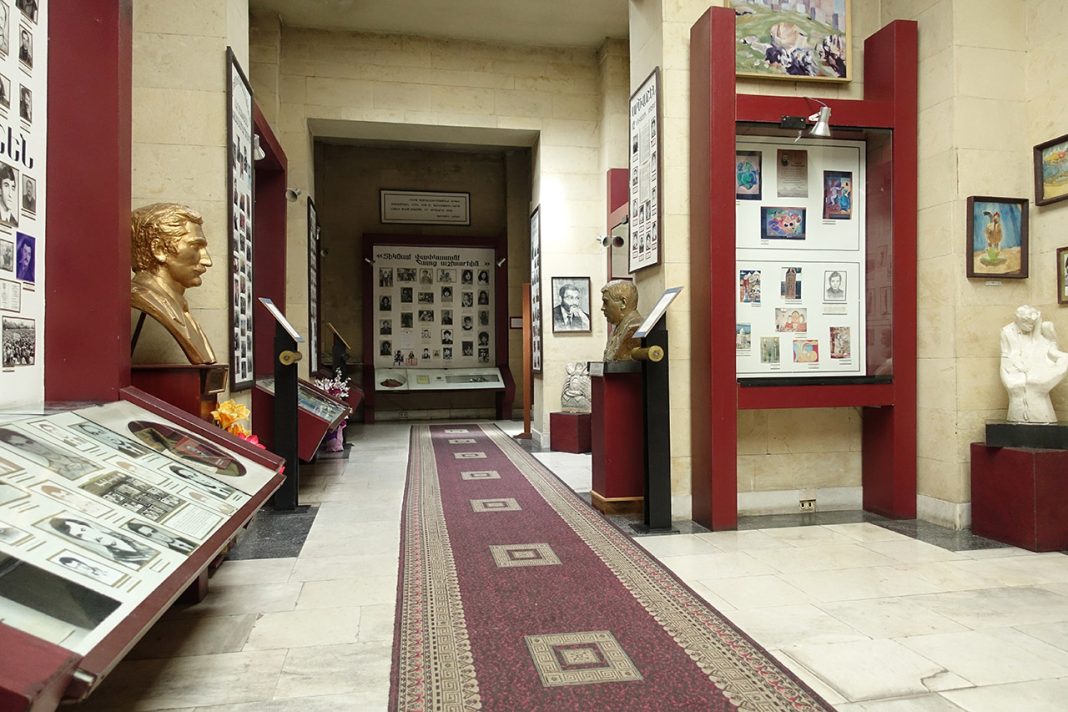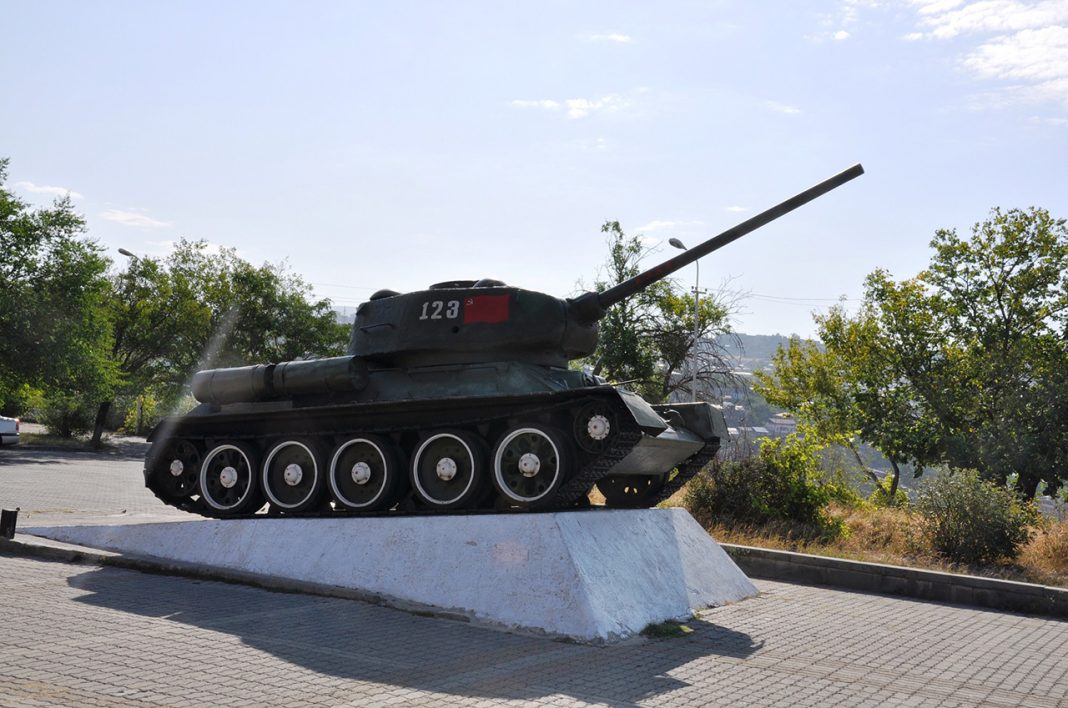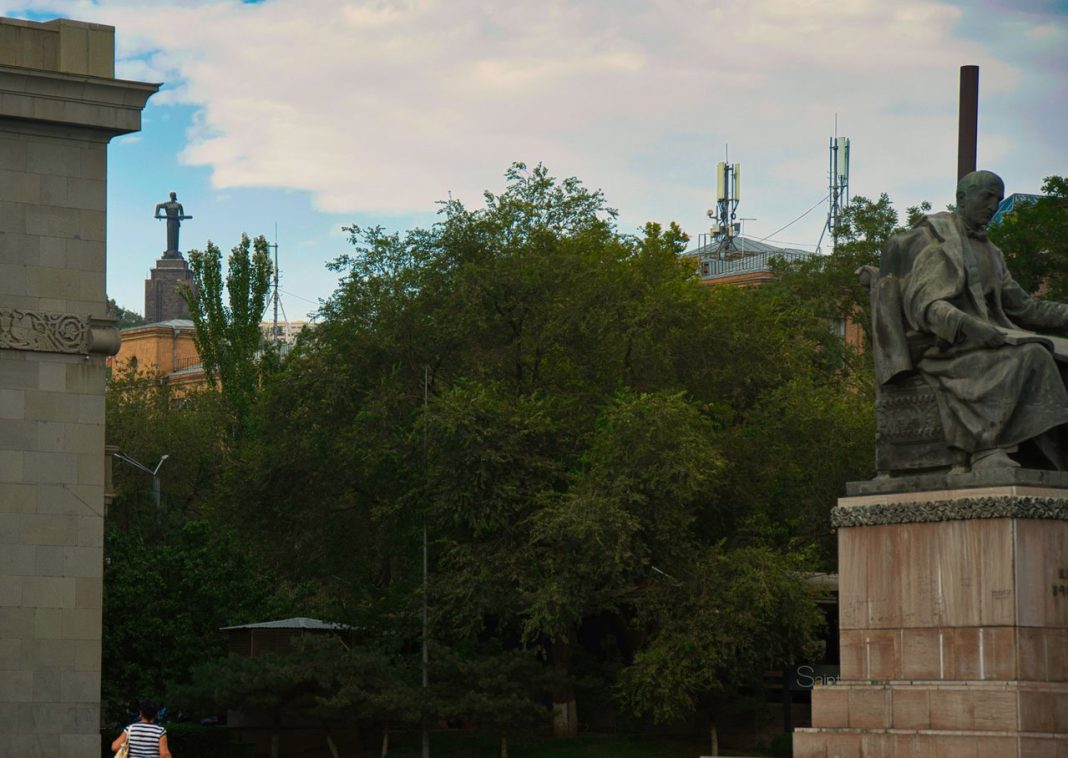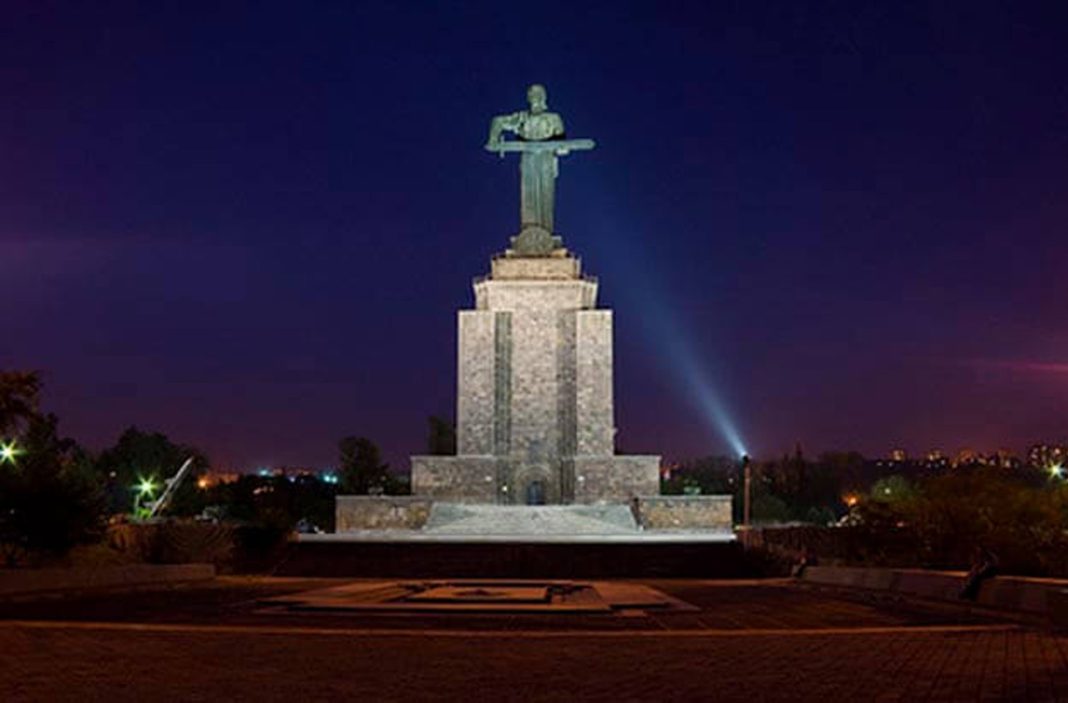TOURINFO-January 18, 2024-The Mother Armenia statue, known as Mayr Hayastan in Armenian, stands as an enduring symbol of strength, resilience, and the indomitable spirit of the Armenian people. Proudly situated in Victory Park, it gazes majestically over the capital city of Yerevan, representing not only a physical landmark but also a poignant testament to the unwavering determination that characterizes the essence of the Armenian nation.
 In 1967, a defining chapter unfolded in Armenia’s history with the unveiling of the iconic Mother Armenia statue, a poignant replacement for a once-standing memorial featuring General Secretary Joseph Stalin. Originally conceived as a victory tribute, the statue, a masterpiece by sculptor Sergey Merkurov, held significance in its time. The transformative moment, orchestrated by visionary architect Rafael Israelyan and accomplished sculptor Ara Harutyunyan, marked a departure from the glorification of dictators. Mother Armenia now stands as a commanding figure, soaring 22 meters (72 ft.) high, with an overall monument reaching an impressive 51 meters (167 ft.), inclusive of its formidable basalt pedestal museum. This awe-inspiring creation not only symbolizes the nation’s strength but also reflects a new era of resilience and national identity.
In 1967, a defining chapter unfolded in Armenia’s history with the unveiling of the iconic Mother Armenia statue, a poignant replacement for a once-standing memorial featuring General Secretary Joseph Stalin. Originally conceived as a victory tribute, the statue, a masterpiece by sculptor Sergey Merkurov, held significance in its time. The transformative moment, orchestrated by visionary architect Rafael Israelyan and accomplished sculptor Ara Harutyunyan, marked a departure from the glorification of dictators. Mother Armenia now stands as a commanding figure, soaring 22 meters (72 ft.) high, with an overall monument reaching an impressive 51 meters (167 ft.), inclusive of its formidable basalt pedestal museum. This awe-inspiring creation not only symbolizes the nation’s strength but also reflects a new era of resilience and national identity.
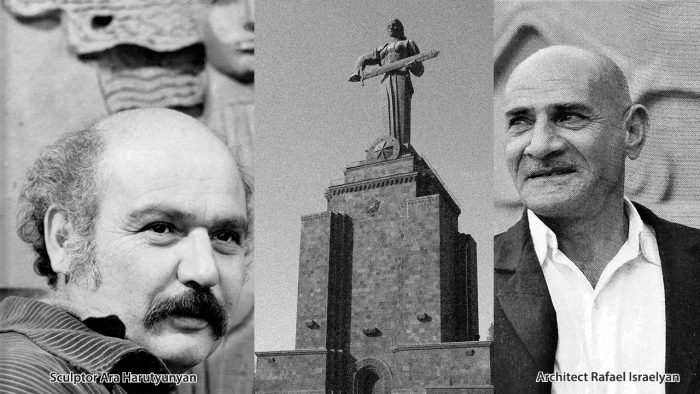 Meticulously constructed of hammered copper, the statue emanates a sense of strength, while the basalt pedestal adds an element of solidity to the structure. This monumental statue holds profound significance, symbolizing the fortitude of the Armenian people and paying homage to their contributions during World War II.
Meticulously constructed of hammered copper, the statue emanates a sense of strength, while the basalt pedestal adds an element of solidity to the structure. This monumental statue holds profound significance, symbolizing the fortitude of the Armenian people and paying homage to their contributions during World War II.
In a decisive move away from the glorification of dictators, architect Rafayel Israyelian transformed the pedestal of the Stalin statue into a three-nave basilica Armenian Church, signifying a shift away from fleeting dictatorships. This transformation in 1962, marked by the removal of the Stalin statue, was not without challenges, with one soldier losing his life and many others injured. However, in 1967, Mother Armenia, the embodiment of the nation’s strength, proudly assumed her place on the hill.
The prototype for the Mother Armenia Statue is Genya Muradian, a 17-year-old girl born in 1943, discovered by sculptor Ara Harutyunyan in a store in Yerevan. Muradian’s striking beauty and presence convinced Harutyunyan that she embodied the strength and resilience he wanted to convey through the monument. The resulting statue now stands as a symbol of the nation’s endurance and power.
 For many years, Genya Muradian kept her role as the model for the beloved statue a family secret, not even disclosing it to her husband. In a later interview with Amos Chapple of Radio Free Europe (March 11, 2021), she shared her experiences of the posing sessions, noting Harutyunyan’s intense concentration and the sculptor’s creative choices, such as the distinctive stern eyebrow on the statue, which he explained as a symbol of strength.
For many years, Genya Muradian kept her role as the model for the beloved statue a family secret, not even disclosing it to her husband. In a later interview with Amos Chapple of Radio Free Europe (March 11, 2021), she shared her experiences of the posing sessions, noting Harutyunyan’s intense concentration and the sculptor’s creative choices, such as the distinctive stern eyebrow on the statue, which he explained as a symbol of strength.
Genya Muradian’s connection to the Mother Armenia statue adds a personal and human element to the monument’s symbolism, enriching its significance for the people of Armenia. Her story serves as a reminder of the real individuals behind the iconic statues that often come to represent entire nations and their histories.
Mother Armenia’s location overlooking Yerevan positions her as a guardian of the capital, a silent sentinel reminding Armenians of their heritage and the sacrifices made during times of conflict. Every year on May 9, thousands gather to lay flowers at the statue, commemorating the Armenian martyrs of World War II.
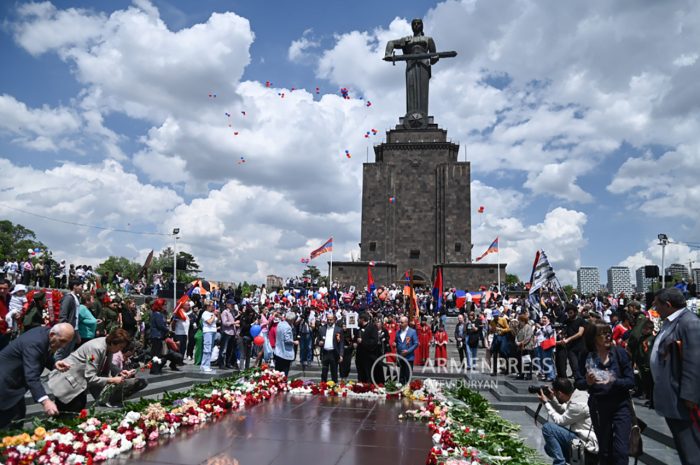
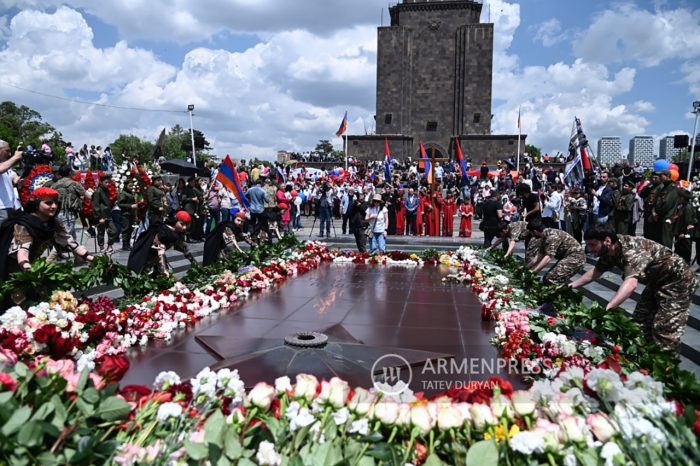
 The pedestal now houses the Mother Armenia Military Museum of the Ministry of Defense, initially dedicated to World War II but prominently featuring artifacts and memories from the Nagorno-Karabakh War of 1988–1994. The museum serves as a testament to the enduring spirit of the Armenian people and their commitment to preserving the memories of past struggles.
The pedestal now houses the Mother Armenia Military Museum of the Ministry of Defense, initially dedicated to World War II but prominently featuring artifacts and memories from the Nagorno-Karabakh War of 1988–1994. The museum serves as a testament to the enduring spirit of the Armenian people and their commitment to preserving the memories of past struggles.
Mother Armenia’s symbolism extends beyond war, resonating with the stories of prominent Armenian women like Sose Mayrig, who played vital roles in defending their families against external threats. She stands not only as a guardian of Yerevan but also symbolizes peace through strength.
 In addition to this iconic statue, Yerevan boasts a multitude of treasures, including the mesmerizing Cascade Complex—a must-visit tourist attraction. The Cascade offers panoramic views of the city, adorned with contemporary art installations and sculptures, creating an immersive experience for visitors exploring the rich history and culture of Armenia’s vibrant capital.
In addition to this iconic statue, Yerevan boasts a multitude of treasures, including the mesmerizing Cascade Complex—a must-visit tourist attraction. The Cascade offers panoramic views of the city, adorned with contemporary art installations and sculptures, creating an immersive experience for visitors exploring the rich history and culture of Armenia’s vibrant capital.
TOURINFO-JUANITA MOURADIAN



